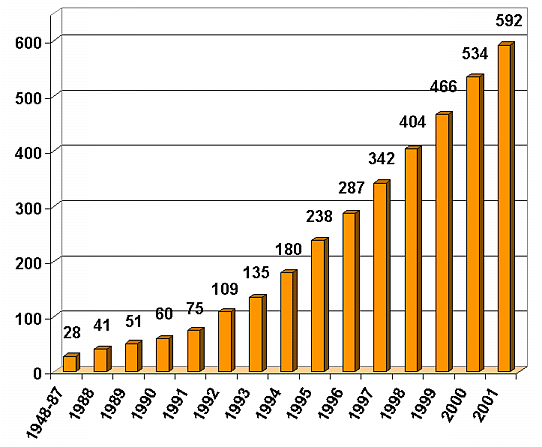 |
Historical Overview |
 |
Historical Overview |
Historical Overview
Rietveld refinement is a useful for fitting powder diffraction profiles when some idea of the structure is known, but it is not a method in itself for solving structures. Sometimes very crude starting models can be used and a structure "solved" and refined. However, this is not what is meant by structure determination from powder diffraction data.
The expression ab-initio has been used to describe structure solution from powder diffraction data, and was justified in the early days to distinguish the determination of new crystal structures from the simple isomorphic replacement methods then in use: for example, many oxides with formula ABO3 have the gadolinium ferrate distortion (orthorhombic) of the cubic perovskite structure, and so given a substance with this composition, one could "solve" the structure of novel oxide by simply using the structure of GdFeO3 as a starting model. Given the number of structures that have now been solved directly by powder diffraction, then the expression "ab-initio" is probably now redundant.
The graph below shows the cumulative total for the number of structures solved from powder diffraction data. The total up to 1987 was very small, and only really accelerated with the development of the LeBail automatic pattern decomposition method described later in this section. Given that the numbers are cumulative per year, the growth rate is still relatively static at around 60-70 new structures reported each year. This probably reflects the high-level of expertise required for success in this area of powder diffraction. However, the graph does not take into account the ever increasing number of new organic structures that are determined by, for example, workers in the pharmaceutical industries who do not publish for commercial reasons.

There are many steps in structure determination, and success is required at each stage for the process to be considered an overall success. The next few pages provide a simple overview of the various processes involved in structure determination by powder diffraction (which is commonly abbreviated to SDPD).
| © Copyright 1997-2006. Birkbeck College, University of London. | Author(s): Jeremy Karl Cockcroft |